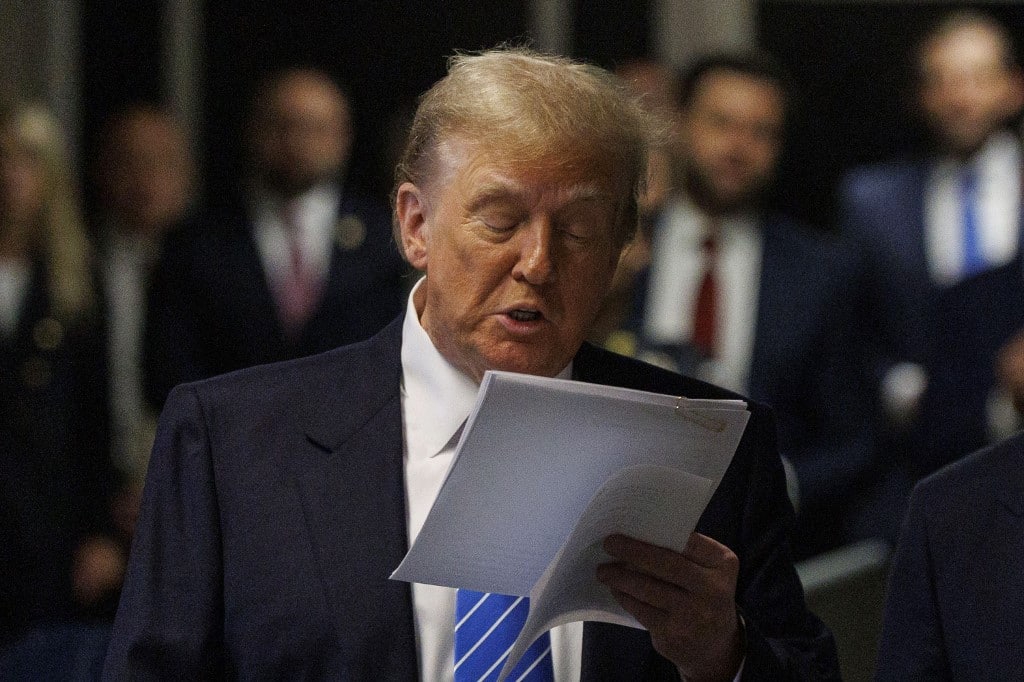
Nearly 160 million votes were cast in the 2020 U.S. presidential election, the highest rate of voter turnout since 1900. But unlike then, today we have access to more data than ever thanks to polling services further popularized by the internet and sites like FiveThirtyEight, and of course, there are more oddsmakers than ever before that offer betting markets on political elections.
The U.S. presidential election only comes around once every 4 years, and it is like the World Cup or Super Bowl of elections for bettors and prognosticators. After all, it only determines the person with the most powerful job in the world for the next 4 years.
However, are we getting better at predicting elections with the main methods we have in betting odds and polls? Before betting on this election at top-rated sportsbooks, let’s take a look at the pros and cons of these methods and just how accurate they have been in recent presidential elections.
Betting Favorites Usually Win Elections
Thanks to a resource like Sports Odds History, which curated historical U.S. presidential election odds back to 1872 from reliable newspaper sources, we can quantify how good betting odds have been at predicting these elections.
| Year | Winner (Party) | Winner Odds | Runner-up (Party) | Runner-up Odds |
|---|---|---|---|---|
| 2020 | Joe Biden (D) | -175 | Donald Trump (R) | +150 |
| 2016 | Donald Trump (R) | +375 | Hillary Clinton (D) | -550 |
| 2012 | Barack Obama (D) | -450 | Mitt Romney (R) | +360 |
| 2008 | Barack Obama (D) | -900 | John McCain (R) | +800 |
| 2004 | George W. Bush (R) | -188 | John Kerry (D) | +138 |
| 2000 | George W. Bush (R) | -175 | Al Gore (D) | +125 |
| 1996 | Bill Clinton (D) | -1000 | Bob Dole (R) | +600 |
| 1992 | Bill Clinton (D) | -800 | George H. W. Bush (R) | +500 |
| 1988 | George H. W. Bush (R) | -700 | Michael Dukakis (D) | +400 |
Of the last 35 U.S. presidential elections where there was a clear betting favorite by the odds, that favorite has won 27 times, or 77.1% of the elections. Note that there were 3 elections (1880, 1952, and 1980) where the candidates were tied in the final odds.
That’s a strong winning percentage for the favorite, and it has improved in recent times after some upsets in the 19th century. In the last 30 elections with a clear favorite, the favorite is 26-4 (.867) with a 9-1 record (.900) since Ronald Reagan’s reelection in 1984.
Being the favorite is one thing, but the strength of your odds is also important. Just consider this split for the favorite since 1872:
- Favorites with odds of -175 or better are 26-2 (.929) in U.S. presidential elections.
- Favorites with odds of -150 or longer are 1-6 (.143) in U.S. presidential elections.
That’s interesting that being only a slight favorite has been one of the worst outcomes for winning the election. Only John F. Kennedy (-150) won in that scenario against Richard Nixon (+130) in 1960.
- Dynamic Betting Variety
- User-Friendly Interface
- Daily Odds Boosts
- Multilingual Support
- Lucrative Rewards Program
- Exciting Odds Boost Promotions
- User-friendly Interface
- Depth of sports coverage
Betting Odds and Polls in Recent Presidential Elections
Let’s look at some real numbers and how these prediction methods have fared in the last 3 presidential elections in 2012, 2016, and 2020.
2012 ELECTION: INCUMBENT BARACK OBAMA (D) DEFEATED MITT ROMNEY (R)
Betting odds generally favored an Obama reelection all the way, including odds in the -200 to -250 range near the election and as high as -300 on election day.
Polling data predicted a tighter race. The final Gallup Poll had Romney receiving 50% to Obama’s 49%. The RealClear Polling final average was 48.8% for Obama and 48.1% for Romney.
Actual results: Obama won with 51.1% of the popular vote to 47.2% for Romney. Obama received 332 electoral votes to 206 for Romney. Obama won 8-of-9 swing states.
2016 ELECTION: DONALD TRUMP (R) DEFEATED HILLARY CLINTON (D)
This is regarded as one of the biggest upsets in election history. Clinton was always the favorite leading up to the election. However, with just 2 weeks to go, an FBI investigation into her emails dropped Clinton from -550 odds to about -300 odds. Trump improved to +200 because of that.
Just shy of midnight on election night, Trump’s live odds were up to -2000 as the upset was a done deal. Trump was able to win Wisconsin, Michigan, and Pennsylvania by just tens of thousands of votes to swing the election his way.
Not many gave Trump much of a chance, but Silver at FiveThirtyEight did give him a 28.6% chance of winning in 2016. Final polling numbers, which almost all had Clinton winning, had Clinton at 46% and Trump at 42% for the popular vote. The RealClear Polling final numbers were Clinton with a 3.2-point advantage (46.8% to 43.6%).
Actual results: Clinton won the popular vote with 48.18% and Trump at 46.09%. But Trump won the electoral vote 304-227.
2020 ELECTION: JOE BIDEN (D) DEFEATED INCUMBENT DONALD TRUMP (R)
While it was expected to be a close election, Democratic challenger Joe Biden was the betting favorite for most of the election process. On election day, Biden was around -200 to -250 in the betting odds.
However, with Trump taking the early lead on election night, live odds quickly jumped to make him a favorite of -600 or higher. So, that proved to be good value for Biden bettors to jump in as the mail-in ballots that were so heavily slanted towards Biden voters erased Trump’s lead and Biden ended up winning after a few days of counting the votes.
Polling was favorable to Biden as well with final numbers at RealClear Polling of 51.2% to Biden and 44.0% to Trump.
Actual results: Biden received 51.31% of the popular vote to 46.86% for Trump.
Correlation with Electoral Vote Margin
Not only do betting favorites usually win presidential elections in the U.S., but big favorites (by the odds) usually clean up in the electoral vote margin as well.
For example, in the 1972 election, incumbent Richard Nixon had the highest odds (-10000) of any candidate since 1872, making him an easy favorite over George McGovern (+5000). Not only did Nixon win, but he won the electoral college by 502 votes (520-18), the 3rd-largest margin ever.
In fact, you can take the winner’s presidential odds and compare that with the electoral college vote margin, and you’ll find a correlation of minus-0.45. That is a solid correlation for something like this.
Of the 14 favored candidates with -500 odds or better to win the presidency, 12 of them went on to win the electoral vote by a margin of at least 192 votes. The 2 who didn’t lost outright in a couple of massive upsets in the last 76 years. Otherwise, the correlation would be stronger.
The Upsets That Joe Biden and the Democrats Can Learn From
With top-rated sportsbooks recently giving Donald Trump -175 odds to win the 2024 election, Joe Biden (+250) and the Democrats could need the 3rd-largest upset since 1872 this November.
| 2024 Presidential Candidate | Bet365 CA Betting Odds | Implied Win Probability | SportsInteraction CA Betting Odds | Implied Win Probability |
|---|---|---|---|---|
| Donald Trump | -175 | 63.64% | -154 | 60.61% |
| Kamala Harris | +150 | 40.00% | +130 | 43.48% |
But there are lessons to learn from the only 2 bigger upsets on record.
In 1948, Democratic incumbent Harry S. Truman was not looking good for getting reelected. His party was divided, his approval rating was very poor at the end of June, and he was a considerable underdog to Republican challenger Thomas Dewey (-1800). Truman had +1500 odds to win the election, which is an implied chance of 6.25%.
But in the biggest election upset in modern history, Truman won the electoral vote over Dewey by a 303-189 margin. That sounds like a big margin, but Truman won Ohio, Illinois, and California each by less than 1% of the popular vote. Dewey would have won if those states swung the other way in very close races.
In a similar fashion, Trump (+375) pulled off his upset in 2016 over favored Democrat Hillary Clinton (-550) in large part due to tens of thousands of votes in the swing states of Michigan, Wisconsin, and Pennsylvania. Few thought the Republicans could pull that off.
There are 50 states, but many elections have been determined by the results of just one trio of states.
Trump’s Path to Emulating Grover Cleveland
While Biden was favored to beat Trump in 2020, those roles are looking like they will reverse this year. Either way, current history cannot touch what happened in 1884-92 when 3 consecutive elections produced an underdog winner. Only 4 of the last 32 elections have been won by an underdog.
Democrat Grover Cleveland was part of all 3 upsets, and to this day, he is still the only U.S. president to serve non-consecutive terms in office. But Trump can join him, and he is actually on a similar path as he looks to go win-lose-win in general elections.
- In 1884, underdog Grover Cleveland (+150) defeated favorite James Blaine (-150).
- In 1888, incumbent Cleveland (-105) lost as a slight favorite against his challenger Benjamin Harrison (+105).
- In 1892, underdog Cleveland (+125) took the rematch from incumbent Harrison (-125) in what was the least close election of these 3.
There have been 6 rematches in U.S. presidential election history, and the person who won the 1st election is only 2-4 in the rematch. There has not been a rematch since Dwight Eisenhower went 2-0 against Adlai Stevenson in 1952-56.
But in Eisenhower’s case, he went from an even race with both candidates having -120 odds in 1952 to a heavy favorite (-600) in 1956. Right now, it looks like Trump is going to be the favorite in this 7th potential rematch.
That would also mean Trump and Biden would make it back-to-back elections where the incumbent was the underdog. That hasn’t happened since the Civil War ended, and unless we can find betting odds before 1872, it might have never happened before.
Betting Odds: A Reliable Predictor
In the decades following the Civil War, it was actually quite common for Americans to bet money on the presidential election. Newspapers would even run the current odds for everyone to see. Public interest was high and election day was a spectacle for bettors who didn’t have all the bells and whistles we get today with things like professional sports and horse racing to bet on.
According to economists Paul Rhode and Koleman Strumpf, when you adjust for inflation, there was $270 million wagered on the 1916 presidential election when incumbent Woodrow Wilson upset favorite Charles Evans Hughes in one of the closest elections ever. Woodrow had 277 electoral votes to 254 for Hughes. It was really the only upset in an election from 1884 through 1940.
Most of those bets were placed in New York right around Wall Street. However, those days of massive spending on bets and getting odds in the newspaper died out around World War II after scientific polling came into focus.
Today, you basically have to place a bet with an offshore sportsbook to get your wagers on the election if you live in America. The betting markets and polls have also been closely aligned in recent elections, which are usually close now. With so much tribalism in the country, you just cannot expect someone to win in blowout fashion like when Ronald Reagan received 525 electoral votes in 1984.
However, the betting favorite usually wins the election. In addition to 1916, the other notable upsets include 1948 when Harry S. Truman defeated Thomas E. Dewey and 2016 when Donald Trump upset Hillary Clinton.
Pros and Cons of Betting Markets for Presidential Elections
There are several pros and cons for relying on the betting markets to predict the winner of a U.S. presidential election.
Pros:
- Betting markets can adjust very quickly to real-time news updates of significance, such as a candidate’s health, investigations like the FBI looking into Hillary Clinton’s emails in 2016 right before the election, or if something were to happen with Trump’s sentencing in July this year.
- Bettors put their money where their mouth is and vote the way they bet, and there are millions wagered on elections, so these voters have a vested interest in helping their candidate win their bet for them.
- The odds have good predictive power and a track record of success with favorites usually winning the election outside of 1916, 1948, and 2016.
Cons:
- Market manipulation is possible if some sharks make huge bets that sway the odds in a certain direction, such as when someone bet at least $4 million on Mitt Romney in the 2012 election. It is also possible that the population of bettors are not evenly distributed among Democrats, Republicans, and independents, giving one side an advantage.
- While updating for current news can be good, sometimes that is an overreaction, such as Trump’s guilty verdict this year. After 2 weeks, his odds are right back to where they were before the verdict was read.
- Live betting odds in 2020 grossly overestimated Trump’s chances of winning on election night as the mail-in votes, which were largely done by Joe Biden voters, were not counted until later, which led to Biden’s victory.
- Since the odds are just for the winner, it may not be reflecting the state-wide odds properly in the swing states that should ultimately decide the election winner.
Polls: Painting a Fuller Picture
There is very good market efficiency with bets on the presidential election, but you don’t get the full picture of an election from a group of bettors choosing the winner. You need more data to collect to gauge public opinion over time and to understand how different regions of the country feel and different demographics such as women, minorities, level of education, salary, etc.
Polling the public was not done in a very organized or scientific manner back in the day. There was Literary Digest, a popular magazine, but it didn’t always get things right. It incorrectly predicted the 1936 election, which was correctly predicted by George Gallup at his firm that started doing scientific polling in the 1930s.
That made the Gallup Poll popular, and other polling firms started doing the same work to create more data samples from the population of who people thought would win the election.
From 1936 to 2008, the Gallup Poll in particular nailed every winner except for the Truman-Dewey upset of 1948, and they also had Gerald Ford retaining the White House over newcomer Jimmy Carter in one of their final polls just days before the election in 1976. The final Gallup poll was 47% for Ford and 46% for Carter. The actual results were 50.08% for Carter and 48.02% for Ford.
Polling took on a bigger role in the late 2000s after Nate Silver created an election prediction model that correctly predicted 49 of the 50 states in the 2008 election won by Barack Obama. In overseeing the website FiveThirtyEight, Silver and his staff have provided condensed polling data and use that in their prediction models that have mostly done an adequate job in predicting election results since 2012.
Pros and Cons of Polls for Presidential Elections
There are pros and cons to relying on polling data for presidential elections.
Pros:
- Polls can offer important insights into voter demographics, including how women, minorities, and different age groups, salary groups, and education levels view the candidates.
- This data can be collected and analyzed over time for months leading up to the election to see if the candidate is trending up or down, and which counties in which states they may need to focus their campaign efforts on more.
- While not as instant as betting markets, polls can update for real-time developments and show changes in public perception after things like Trump’s guilty verdict or how the Trump-Biden debate will go later this month.
- Polls have done a fairly decent job of predicting election outcomes, and they have a harder job than major betting markets since they are judged by state-level results in addition to who ultimately wins and loses the election.
Cons:
- Sampling errors are possible if you include too many data points from people of similar backgrounds and are not getting enough of a random sample of the population.
- People can choose not to respond to pollsters, or they can flat-out lie to pollsters for various reasons, leading to bad data going into the pot.
- Polls can take time to complete, leading to outdated info should real-time events dramatically change perceptions of voters (i.e. if Biden or Trump had a medical emergency tomorrow, poll results from the last 3 days are unlikely useful).
- People change their minds, so what someone answered on a poll in June may have no correlation with who they vote for in November or if they show up to vote at all.
*The line and/or odds referenced in this article might have changed since the content was published. For the latest information on line movements, visit OddsTrader’s free betting odds tool.







